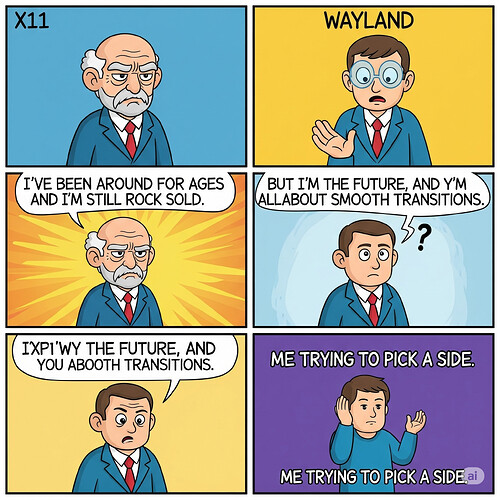In the ever evolving landscape of Linux display protocols, the debate between the time-tested X11 and the modern Wayland is a central topic. For many, the switch to Wayland is a logical step, a necessary modernization of a core component of the graphical user experience. After all, the original X11 protocol existed before many of the developers who maintain it today a testament to its longevity, but also an argument for a simpler, more streamlined successor. This assessment reflects the lively discussions surrounding the introduction of UTF-8 years ago a step toward a more unified and straightforward standard.
However, the switch to Wayland is not without challenges, especially in certain use cases. In the gaming sector, for example, many users report that Wayland still has significant hurdles to overcome. Anecdotal and even benchmark results from distributions like Gnoppix, which run the lightweight XFCE desktop environment on X11, have shown that it is not only remarkably stable but also surprisingly powerful, in some cases even outperforming Windows in gaming. This level of performance and stability represents a high hurdle for Wayland, and for many gamers, the motto is “never change a running system.” The focus remains on a stable and reliable gaming experience, and X11 often delivers this more reliably at this time.
The issue of security is another common point of contention. Wayland proponents often tout its more secure architecture, but this can imply that X11 is inherently insecure. Although X11’s design allows for more communication between clients, which can be a point of attack for malicious activity, a good X11 system is by no means vulnerable to attack. For many users, the theoretical security benefits of Wayland do not outweigh the practical stability and compatibility of X11, especially on older hardware, where Wayland can be particularly problematic.
Burying our heads in the sand and claiming X11 is bad and we’re not going to bother with it anymore is, in my opinion, the wrong approach. Projects like Gnome have decided to drop X11 support entirely, and I think that’s the wrong approach. The Linux philosophy is based on freedom and user choice. Older computers, on which Linux often runs excellently, do so thanks to the stability and efficiency of components like X11. Forcing users to fall back on something unstable and immature now is the wrong approach. Once the teething issues with Wayland are resolved, we can all reconsider the switch, but not before.
Ultimately, the decision between Wayland and X11 should remain a personal one, and it’s a positive sign that distributions like Gnoppix offer their users both options. This allows for individual experimentation and lets users decide for themselves which protocol best suits their needs. While the development of Wayland undoubtedly represents the way forward, it is clear that it will take several years to resolve the major issues and achieve the same level of maturity and comprehensive compatibility as its proven predecessor. Until then, stability is paramount for many, and X11 remains a reliable workhorse. 10/10 Gnoppix users are satisfied with the current X11.
~
Gnoppix WebSite: Gnoppix Download - Get Your AI Linux OS
Gnoppix User Forum: https://forum.gnoppix.org
Gnoppix Wiki: http://wiki.gnoppix.org
Gnoppix@X https://x.com/gnoppixlinux
Gnoppix@Facebook Redirecting...
Gnoppix Donations Donation | Gnoppix Linux
Gnoppix Donation Info : https://ko-fi.com/gnoppix
Ethereum: 0xdd6d6eB515030443502366925EB23A5D2847b523
Thank you for your continued support!
#Linux AI General #Security #Privacy #Gnoppix #OpenSource
~
